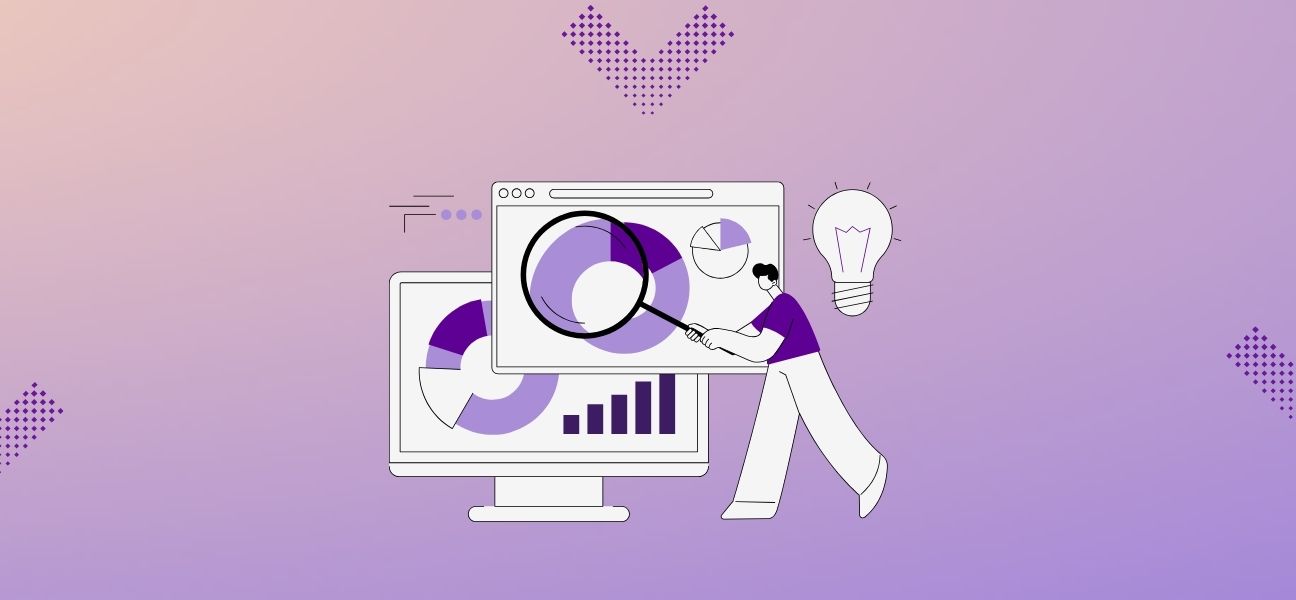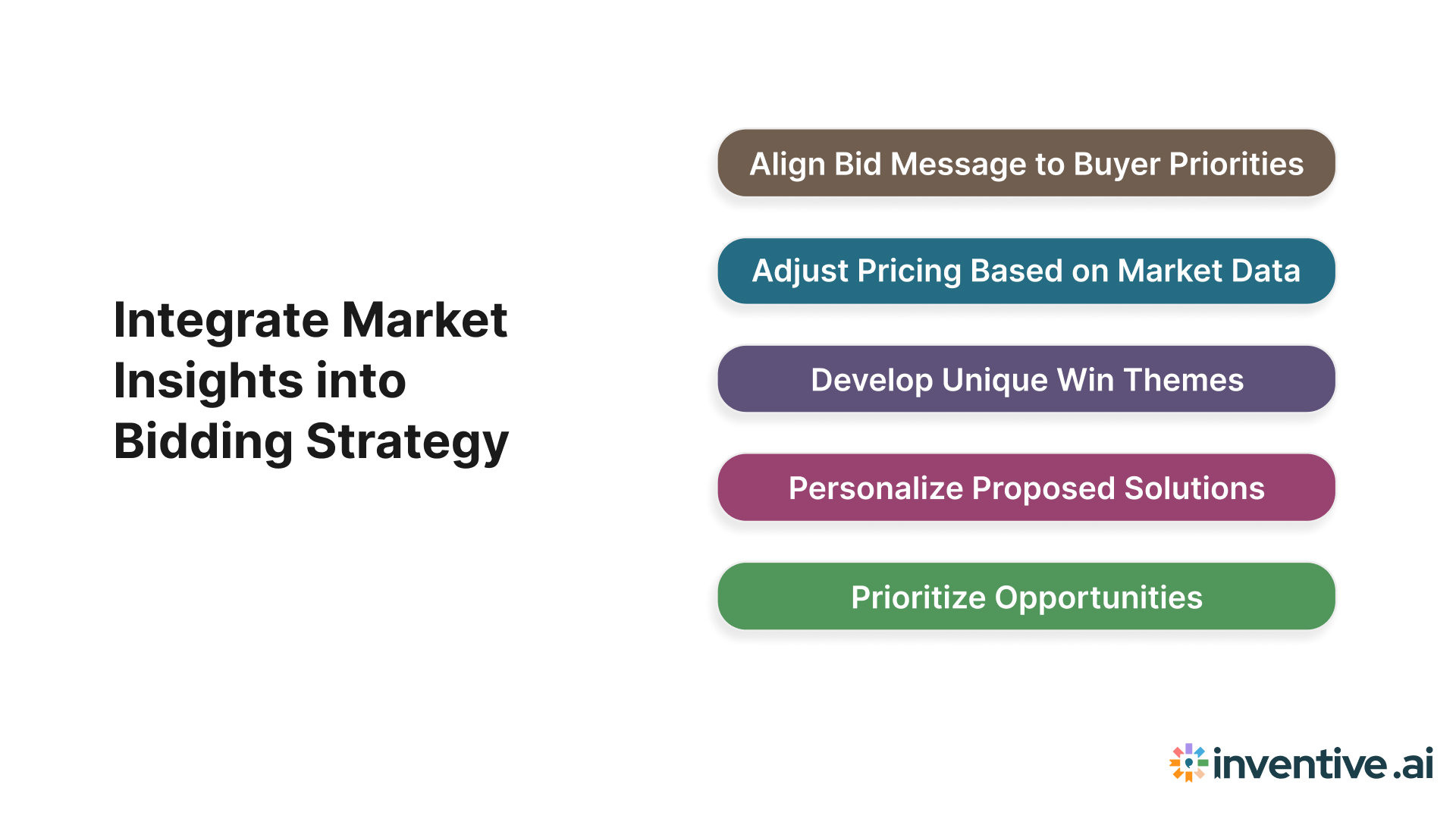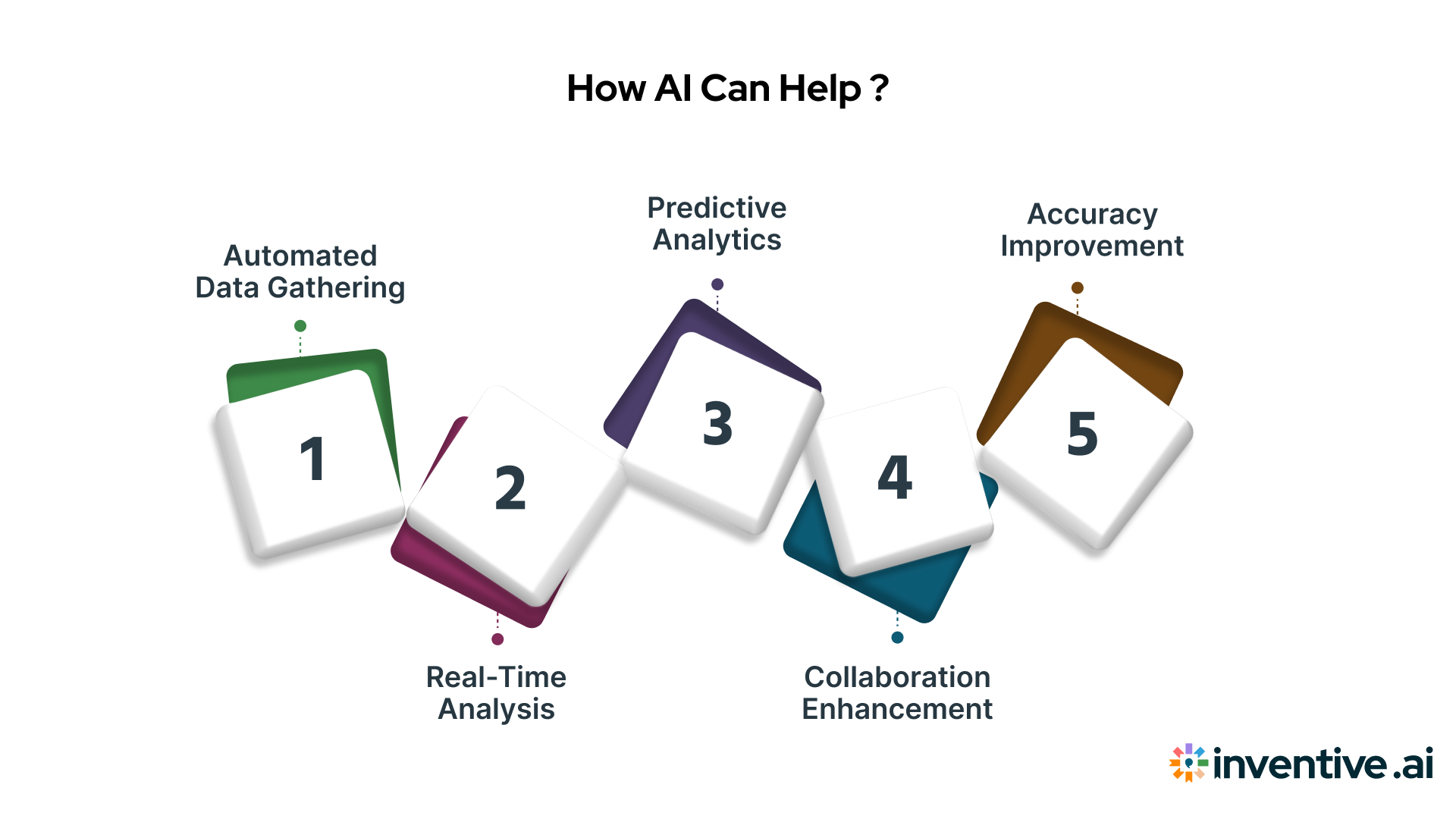Understanding Tender Competitive Intelligence for Bid Success
In this guide, you will learn practical steps for using tender competitive intelligence, mistakes to avoid, and how vendors can improve their bid success using AI and respond better.

How much competitive edge are you really missing in your bidding strategy?
US firms are seeing sharper competition every year, and almost 90% of Fortune 500 companies now use tender competitive intelligence to improve decisions and gain market share.
Many vendors still rely on basic market data, missing out on deeper insights that could help them stand apart. Weak competitor analysis leads to lost bids, wasted resources, and missed growth.
The shift to data-driven procurement is clear, but few teams have the right processes in place.
In this guide, you will learn practical steps for using tender competitive intelligence, mistakes to avoid, and how vendors can improve their bid success using AI and respond better.
Key Takeaways
- Tender competitive intelligence is essential for understanding your competitive environment. It involves collecting and analyzing data about competitors, market trends, and buyer behavior to make informed bidding decisions and improve bid success.
- The core elements of competitive intelligence include identifying competitors, tracking market trends, developing win themes, analyzing pricing strategies, and assessing customer sentiment.
- Successfully including market and competitor insights in your bidding strategy enables you to customize messaging, price effectively, and offer solutions that address buyer needs.
- Common mistakes such as relying on outdated data, ignoring indirect competitors, and failing to act on insights reduce the impact of competitive intelligence. Avoid these pitfalls to maintain relevance and accuracy in your bids.
- AI technologies can transform competitive intelligence by automating data gathering, allowing real-time analysis, improving accuracy, and enhancing collaboration. Using AI helps teams deliver stronger, faster, and more precise bid responses.
What Is Tender Competitive Intelligence?
Tender competitive intelligence is the process of gathering and analyzing information about your competitors, customers, and market conditions specifically related to tendering and bidding.
Unlike general market research, it focuses on insights that inform your strategies for winning bids. It includes understanding competitor strengths, pricing tactics, buyer preferences, and past tender outcomes. Competitive intelligence (CI) helps you spot opportunities, minimize risks, and personalize your submissions to stand out.
It is a targeted effort to analyze how others approach tenders and what factors influence award decisions. By having a clear picture of your competitive environment, you can make better decisions in planning and executing tenders. This focused intelligence is essential in today’s competitive procurement landscape.
Now, let’s briefly understand why CI matters in achieving bid success.
Why Competitive Intelligence Matters for Bid Success?
Competitive intelligence plays a key role in improving bid success. Understanding your competitors and market dynamics lets you craft stronger, more targeted bids. Knowing buyer behavior helps you meet their expectations better. Each of the factors contributes to a higher chance of winning and avoiding costly mistakes.
Here are 5 reasons why competitive intelligence matters:
- Competitive intelligence helps you identify competitor weaknesses and strengths. Knowing this gives you an edge to position your offer better.
- It uncovers market trends and shifts to keep your bids relevant and attractive.
- CI improves buyer insight, allowing for more tailored proposals that resonate with decision-makers.
- It helps manage pricing strategies to stay competitive without sacrificing profitability.
- Competitive intelligence enables risk assessment by analyzing competitor moves and market threats.
Together, these benefits show the value of competitive intelligence in improving bid outcomes. Now, let’s discuss the core elements that make up an effective tender competitive intelligence approach.
Core Elements of Tender Competitive Intelligence
Competitive intelligence for tender success relies on several key elements. Each element provides unique insights that build a complete picture of your competitive environment.
Here are the components that guide your bid strategy and help you make informed decisions:
- Competitor identification lets you pinpoint who your key rivals are. It includes tracking their bidding behavior, strengths, weaknesses, and performance trends. This understanding helps position your offer strategically.
- Market trends analysis focuses on shifts in demand, regulations, and emerging opportunities. Staying updated ensures your bids align with current market conditions and buyer priorities.
- Win themes are the unique selling points (USPs) shaped by intelligence on customer needs and competitor gaps. They help craft proposals that resonate with evaluators.
- Pricing intelligence gathers data on competitor pricing models and buyer budgets. It protects your profitability while staying competitive.
- Customer sentiment analysis (CSA) evaluates buyer feedback and satisfaction from past contracts. It reveals priorities and pain points for tailoring your approach.
Together, these elements form a comprehensive tender competitive intelligence framework. Understanding them is essential for gathering and analyzing actionable insights effectively.
How to Gather and Analyze Competitor Insights: 4 Step Framework
Gathering and analyzing competitor insights is an important step in crafting winning bids. It helps you understand your competition’s moves and identify opportunities and risks. Accurate research, effective analysis, and using the right tools ensure your intelligence is useful.
Here are 4 practical steps to get started:
- Step 1: Planning & Scoping: Start by defining the scope of your intelligence efforts. Identify what information you need and why. Whether it’s understanding competitor pricing strategies, market share, or project execution capabilities. Set clear objectives and determine key performance indicators (KPIs) that align with your business goals.
- Step 2: Data Collection: Gather data from various sources like public databases, news articles, procurement websites, and competitor reports. Use tools like web scraping or procurement-specific platforms to extract relevant information. Ensure that the data collected is recent, reliable, and covers all the necessary dimensions: pricing, project size, past performance, etc.
- Step 3: Analysis & Synthesis: Once data is collected, analyze it to extract meaningful insights. Perform quantitative analysis on pricing and project types, and qualitative analysis on competitors’ strengths, weaknesses, and strategic moves. Synthesize the findings to identify patterns, trends, and gaps in the market that could inform your bid strategy.
- Step 4: Dissemination & Action: Share your insights with relevant stakeholders (e.g., the bidding team, business development, and senior leadership). Use the information to adjust your bid strategy, refine your positioning, and capitalize on opportunities or mitigate risks. Ensure the insights are actionable and directly inform decision-making.
- Benchmarking: Compare your performance metrics, pricing, and proposal qualities against top competitors. Benchmarking provides a clear view of market standards and highlights gaps or advantages in your approach.
- Tender Competitive Intelligence Tools: Use software platforms designed to gather, organize, and analyze competitive data efficiently. These tools help automate data collection, maintain accuracy, and provide actionable insights faster than manual methods.
Combining these steps helps you build a detailed, organized view of your competitive edge. This foundation supports stronger bidding strategies and smarter decision-making. Understanding how to include market and competitor insights into your bids enhances your chances of success.
How to Include Market and Competitor Insights in Your Bidding Strategy?

Once you’ve gathered competitor insights, it’s crucial to apply this data when deciding whether to pursue a specific tender. Here’s how to use intelligence for making informed bid/no-bid decisions:
- Analyze Win Probability Against Key Competitors
Use gathered data to assess your chances of winning against key competitors. Compare their strengths and weaknesses with yours, factoring in their historical performance, pricing strategies, and market positioning. This analysis will help you evaluate whether you’re likely to be competitive. - Assess Alignment with Core Strengths
Evaluate whether the tender aligns with your organization's strengths. If the opportunity plays to your strengths, whether in pricing, service delivery, or technology, then it’s likely a strong contender. If not, consider whether you have the capacity to overcome those gaps. - Understand Market Conditions
Look at broader market conditions revealed through your competitive intelligence. If the industry is facing pricing pressure or if there are better opportunities elsewhere, it may not be worth pursuing a specific tender. - Identify Strategic Value
Sometimes, a tender may not seem like an immediate win but could offer significant strategic value. Use intelligence to assess potential long-term benefits such as gaining market share, entering a new region, or building relationships with key clients.
By applying this intelligence, you can make more informed decisions about where to allocate your resources and which opportunities provide the best chance of success.
Must Read: How to Write Winning Tenders: Top 10 Strategies for 2025
Common Mistakes to Avoid During the Competitive Intelligence Process
Tender competitive intelligence is powerful, but it can easily fail if mistakes occur. Research shows that nearly 88% of threats and opportunities go unnoticed because companies analyze only 12% of their total collected data. Avoiding these pitfalls keeps your process accurate and useful.
Here are some common mistakes and ways to overcome them:
- Focusing Only on Direct Competitors: Limiting your scope to just direct rivals blinds you to indirect or potential competitors who might disrupt your bids. Expand monitoring to include all relevant players. Use tools and broader research to capture the competitive edge fully and avoid falling behind.
- Choosing the Wrong Competitors to Watch: Not every competitor is relevant for your bids. Confusing different market segments or ignoring key rivals wastes time. Define which competitors truly affect your opportunities, focusing research where it matters most.
- Lacking a Formal Process: Ad hoc or unstructured CI leads to inconsistent data and missed insights. Establish a documented, repeatable process with defined tools, roles, and reporting standards. It improves reliability and team coordination.
- Relying on a Single Data Source: Gathering intelligence from one channel risks missing key info or getting biased data. Use multiple verified sources such as databases, news, social media, and interviews. Cross-check to validate and enrich insights.
- Misinterpreting or Overlooking Data: Assuming trends without full context causes wrong decisions. Analyze data critically, consider market conditions, and avoid biases. Involve diverse perspectives in the review to ensure balanced conclusions.
- Ignoring Actionable Follow-up: Collecting info without applying it wastes resources. Translate intelligence into clear recommendations and track implementation. Regular reviews ensure insights lead to measurable bid improvements.
- Overdependence on Technology: Tools speed CI but cannot replace expert judgment. Combine AI and software with human analysis to catch nuances. Provide training to balance automation with critical thinking.
Avoiding these mistakes creates a more effective and sustainable competitive intelligence process. With strong fundamentals, your team can use tender competitive intelligence to improve bid outcomes reliably. Now, let’s understand how AI enhances this process.
Ethical Boundaries in Competitive Intelligence
Maintaining ethical boundaries in competitive intelligence is crucial for building trust with enterprise buyers. Here’s how to do it responsibly:
- Respect Confidential Information
Avoid unethical practices like spying or misrepresentation. Use publicly available data and legitimate sources to ensure compliance and transparency. - Fair Use of Data
Only use publicly available data and refrain from using proprietary or confidential information without permission. Follow legal and ethical guidelines for data collection. - Avoid Undue Influence
Focus on merit-based competition, not undermining competitors through unethical means like manipulation or unfair tactics. - Transparency and Accountability
Clearly state the sources of your data and ensure your team follows ethical guidelines in competitive intelligence practices. - Data Privacy and Security
Ensure compliance with data privacy laws (GDPR, CCPA) and avoid unauthorized data scraping or harvesting.
Inventive AI is here to make sure your competitive intelligence is both effective and ethical. With its Competitor AI Agent, you can automatically gather insights from publicly available data, ensuring that everything you collect is legitimate and compliant. The agent pulls data from legal, transparent sources, so there’s no risk of unethical practices like data scraping or unauthorized access.
How AI Can Help You With Competitive Intelligence?

AI transforms tender competitive intelligence by automating research and analyzing data at speed and scale beyond human capability. It helps teams act faster and more accurately in the bidding process.
Here are a few ways AI adds value:
- Automated Data Gathering: Advanced tools can scan competitor websites, news, and public records simultaneously, eliminating manual data collection. It saves time while ensuring comprehensive and up-to-date information.
- Real-Time Analysis: AI processes vast datasets in real time, spotting emerging market trends, competitor moves, and buyer behavior patterns. These insights help you react quickly to changing conditions.
- Predictive Analytics: By learning from historical data, AI forecasts competitor strategies and market shifts. Anticipating changes helps you prepare stronger bids and avoid risks.
- Collaboration Enhancement: AI platforms centralize intelligence by aggregating data in cloud-based dashboards, making insights accessible to teams anytime. Automated alerts and summaries support better communication and decision-making.
- Accuracy Improvement: Artificial intelligence minimizes human errors by validating data and detecting anomalies. It supports consistent, evidence-based analysis, reducing biased or incomplete conclusions.
These AI capabilities simplify competitive intelligence, improving efficiency and bid quality. This advances your competitive position significantly. Now, let's have a look at how Inventive AI utilizes these strengths to complete the picture.
Also Read: How to Use AI for Proposal Writing
How Inventive AI Utilizes Tender Competitive Intelligence for Bids?
Inventive AI is a leading AI-powered RFP response, automation, and management software designed to simplify and speed up the bidding process. It serves industries with heavy RFP reliance, like technology, healthcare, finance, and government contracting.
The platform automates repetitive tasks, delivers faster drafts, and manages content efficiently. Vendors benefit from improved accuracy, collaboration, and significantly higher win rates.
Here are a few features of Inventive AI that vendors seek to increase their chances of bid success:
- 10X Faster Drafts With Highly Accurate Responses
Using Inventive AI’s AI-Powered RFP response software, users get first drafts 10 times faster. These drafts are rooted deeply in your company’s knowledge sources, ensuring accuracy. Teams can collaborate on these drafts, refining them quickly to produce high-quality, personalized proposals, saving valuable time and reducing errors.
- Single Hub for All Your Knowledge Sources
Inventive AI centralizes all relevant knowledge in one platform. You can upload previous RFPs, documents, and integrate with systems like Google Drive, SharePoint, and others. It ensures teams access the latest and most relevant content without wasting time searching across multiple locations.
- Fight Stale Content With AI Content Manager
The AI content manager proactively uses algorithms to scan your knowledge sources, detecting inconsistencies and flagging outdated information to ensure proposal accuracy. It flags these issues early, ensuring that your responses use up-to-date, consistent, and compliant information. The AI manager also reduces risks and improves the quality and credibility of your proposals.
- Higher Productivity & Competitive Advantage
Inventive AI’s AI RFP agents boost productivity by helping with competitor research, idea generation, and response refinement. This suite of intelligent assistants improves team efficiency and provides insights that help differentiate your bids in competitive environments.
- Win Themes
The platform fills gaps that traditional RFP processes often miss. The software identifies missing content and automatically gathers information from platforms like Slack, calls, and emails. This dynamic approach ensures proposals stay fully up-to-date, precisely meeting client needs and increasing deal closure chances.
Conclusion
Tender Competitive Intelligence plays a vital role in helping organizations make informed decisions in competitive bidding. By gathering and analyzing data about competitors, customers, and market trends, vendors can anticipate challenges, identify opportunities, and customize their bids more effectively. This intelligence helps reduce risks and increases the chances of winning bids in complex procurement environments.
The core elements of tender competitive intelligence include competitor identification, market trend analysis, win themes, pricing intelligence, and customer sentiment assessment.
Equally important is how these market and competitor insights are integrated into your bidding strategy: customizing messaging, pricing, and solutions to better address buyer needs and stand out from competitors. Together, these elements form a solid foundation for more targeted and effective bids.
Common mistakes in the competitive intelligence process, such as relying on outdated data, ignoring indirect competitors, and lacking actionable follow-up, can undermine results. Utilizing AI tools automates research, improves data accuracy, forecasts trends, and simplifies collaboration, allowing teams to stay ahead and continuously improve bid quality and success rates.
Frequently Asked Questions
1. How often should competitive intelligence be updated during a bidding cycle?
Tender competitive intelligence should be updated regularly throughout the bidding cycle to reflect market shifts, new competitor moves, and changing buyer priorities. Monthly updates are common, but more frequent reviews may be needed for fast-moving markets or high-value tenders to keep bids relevant and competitive.
2. What are the ethical boundaries in competitive intelligence research?
Ethical competitive intelligence involves gathering information from publicly available sources, respecting confidentiality agreements, and avoiding deception or illegal activities. It excludes hacking, bribery, or surveillance. Maintaining high ethical standards protects reputation and legal compliance while supporting legitimate business insights.
3. Who should lead the competitive intelligence efforts in an organization?
Typically, a dedicated CI team or business intelligence professionals manage competitive intelligence, often working closely with sales, marketing, and bid teams. Leadership should ensure alignment across departments and provide the resources needed for effective, ongoing intelligence gathering and application.
4. How can small businesses without large budgets do CI effectively?
Small businesses can use free or low-cost tools, publicly available data, customer feedback, and industry reports for competitive intelligence. Networking and partnerships also help. Prioritize intelligence on key competitors and market segments to make the best use of limited resources.
5. What tools are recommended for tender competitive intelligence in tendering?
Effective CI tools include procurement databases, market research platforms, AI-powered analytics software, and CRM integrations. Examples include Inventive AI or specialized RFP automation tools with AI and CI features. Selecting tools depends on budget, industry, and data needs for efficient intelligence gathering and analysis.


